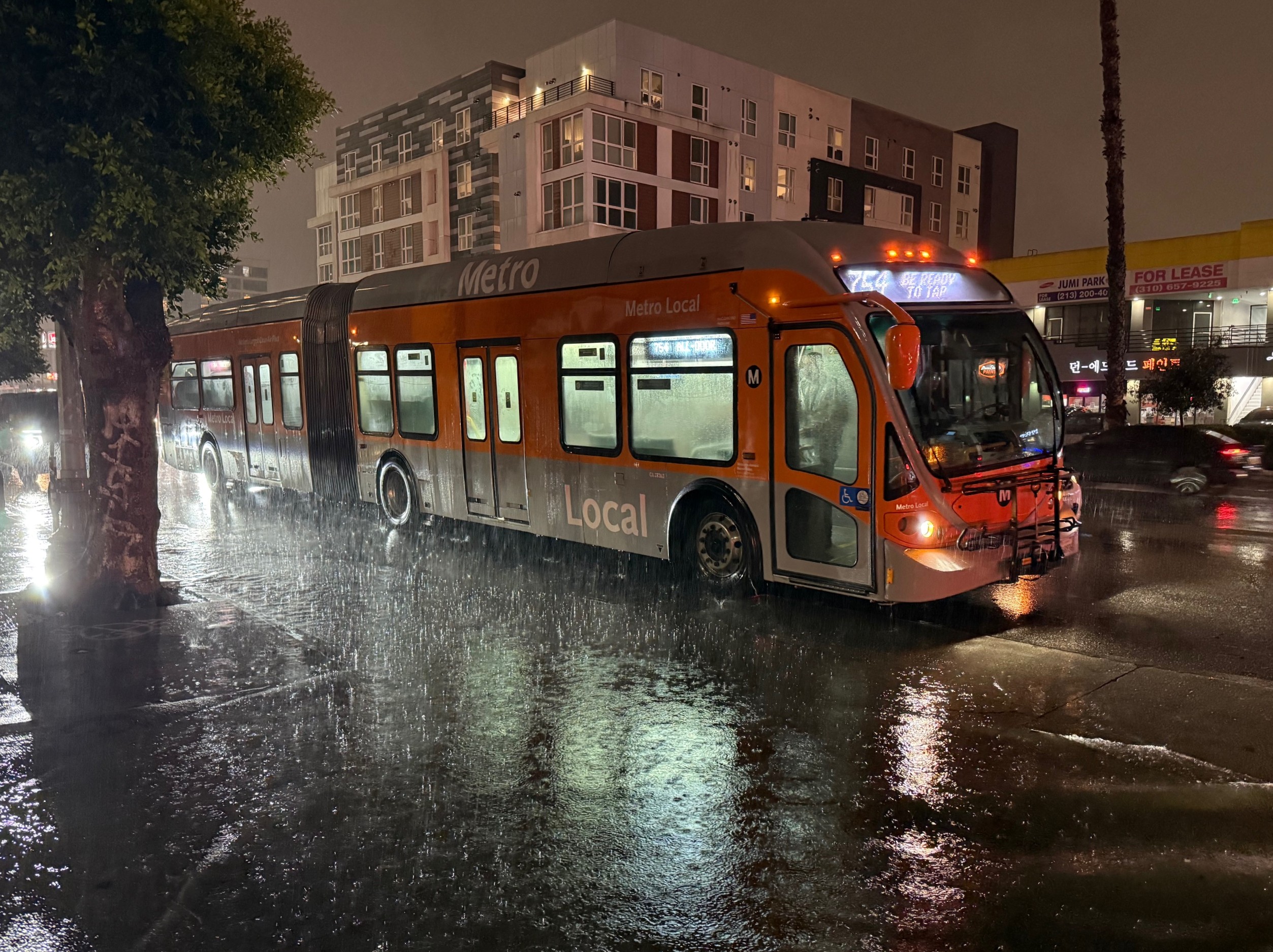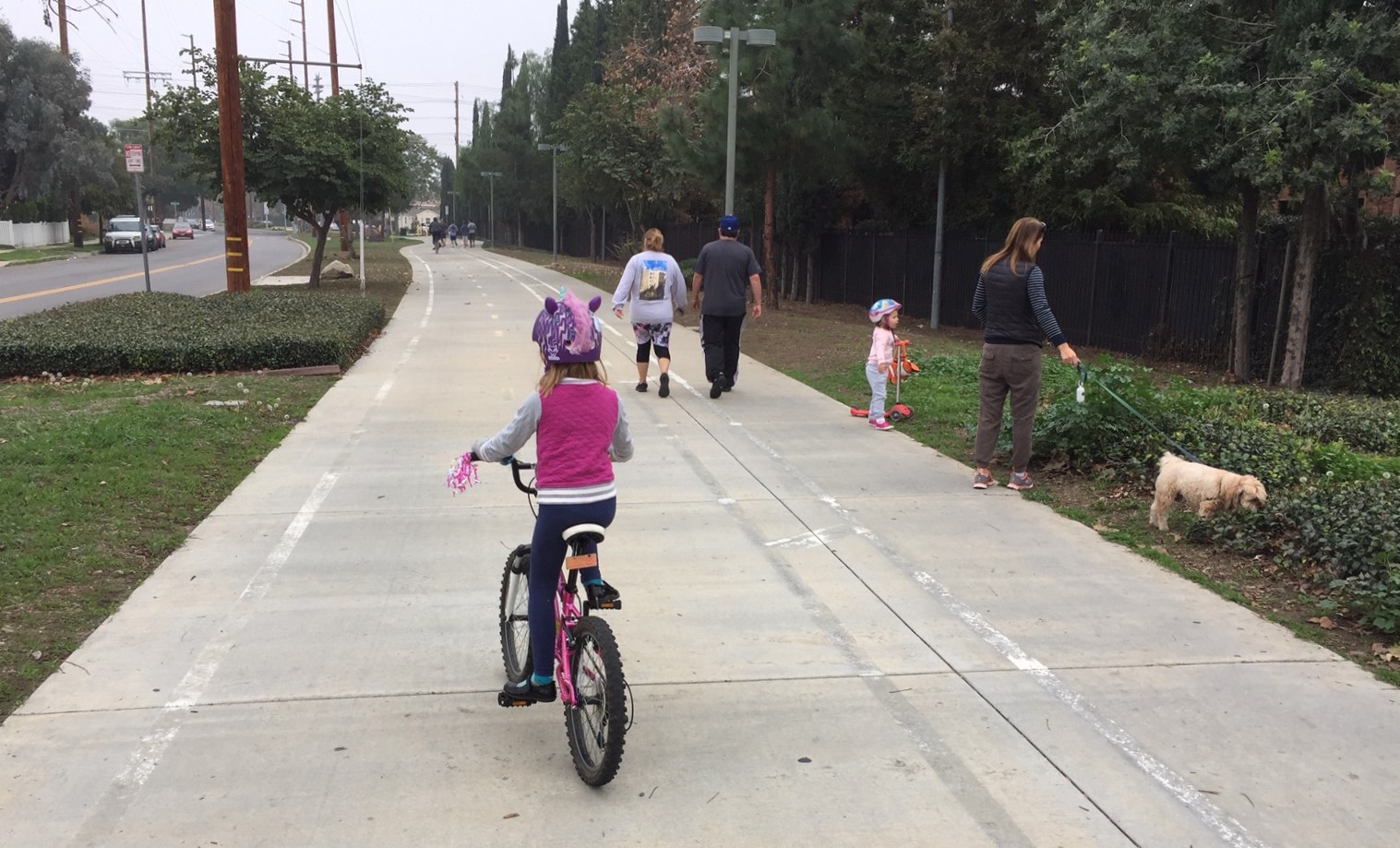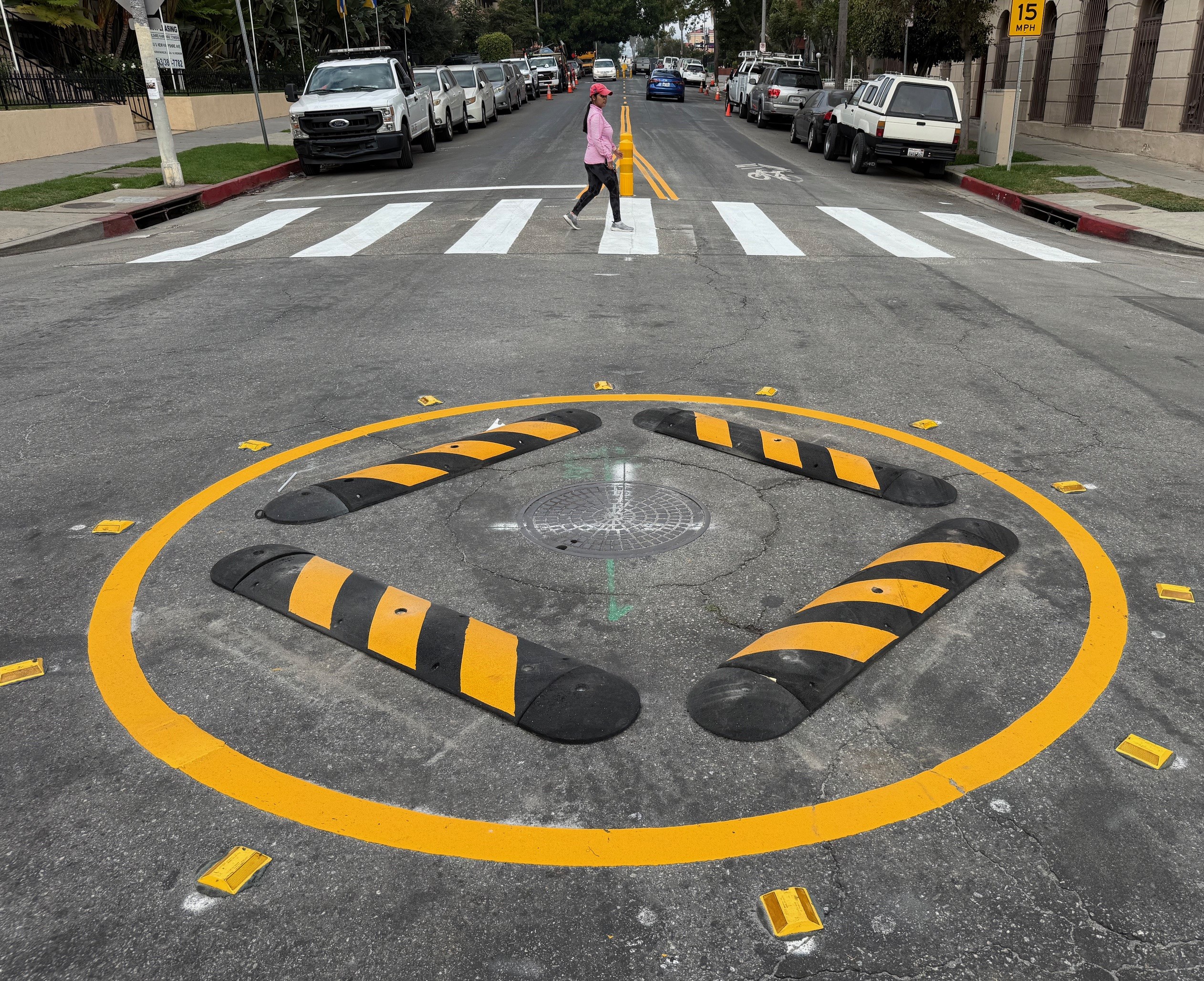 Photo: New York Times via 4 LA Kids
Photo: New York Times via 4 LA KidsUC Berkeley professor Michael Jerrett strongly suggests in a new study that reducing the traffic near people's homes could have a dramatic impact on the health of the children living near public streets.
The bad news? Obesity rates for children in Los Angeles is high. For example, a recent study by the California Food Policy Advocates showed that just over thirty-five percent of seventh graders in Los Angeles have an "unhealthy weight" and forty-two percent have an unhealthy aerobic capacity. As you might expect, unhealthy kids are an indicator of unhealthy adults. The CAFPA study shows that over fifty percent of L.A. County adults fall into the "unhealthy weight" and "unhealthy aerobic capacity" categories. All of these statistics are well above the national average.
Both NYC Streetsblog and SF Streetsblog have taken a look at the report, and broken it down.
In NYC, Noah Kazis reports on the study, which links traffic volumes to youth obesity:
Jerrett shows that not only does the built environment matter, buttraffic volumes matter too. His team's long-term study tracked childrenfrom across Southern California, starting from ages 9-10 and continuingthrough high school. Controlling for a wide variety of factors, theycompared the children's body mass indexes (BMI) to the density oftraffic near their homes.
Children living within 150 meters of high-traffic areas werefound to have, on average, BMIs five percent higher than those livingnear low-traffic areas. Only the immediate surroundings seem to matter:Traffic levels within 300 or 500 meters didn't affect BMI.
Michael Rhodes, in San Francisco, continues,
The researchers put forward two reasons for why traffic volumescontribute to obesity. High asthma rates could be part of the equation,making kids less likely to engage in physical activity. Kids - andtheir parents - also seem to be especially sensitive to the real orperceived danger from cars, much more so than adults.
So what can be done? Jerret sees the ultimate solution to be less cars in sensitive areas, i.e. places where people should be open to walking or biking for transportation and places where children live. He uses the example of London's congestion charging, which reduced traffic by 18% in the central city.
Unfortunately for Angelenos, he takes a somewhat dim view that mixed use neighborhoods are a complete solution if traffic persists.
Moreover, solutions posited in existing literature on builtenvironments suggest that connected, mixed land use neighborhoods withgood “walkability” to destinations in proximity to the home may providesome protection against obesity and physical inactivity. If traffic isan independent risk factor, however, improving the physical structureof the city may be ineffective if high levels of traffic persist inresidential neighborhoods.
That means that we can do all the planning and encouraging of cleaner lifestyles that we want, but if we're unsuccessful in reducing the number of cars on our streets, than we're going to be fighting a losing battle against obesity. That's just one thing to consider the next time a traffic engineer proposes widening a street for "safety and efficiency" reasons. They may be encouraging more cars to drive on the street, but any perceived safety benefits should be weighed against the damage being done to the health and fitness of our children.






